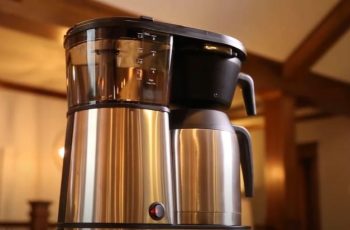How Do You Descale A Cuisinart Coffee Maker Find Out Now
Descaling is a core part when it comes to using a coffee maker. This is true for every coffee maker with Cuisinart not left out. Now the problem is, if you are using a Cuisinart coffee maker for the first time, how to descale it might seem confusing. It is also possible that you will read the user manual and still get confused, but not to worry. We will hold your hand through it. How do you descale a Cuisinart coffee maker? Well, you should keep in mind that it is an easy process and won’t take much time. It is essentially you doing a little bit of this and that, to allow your coffee maker do the rest. Read on to find out how to descale your Cuisinart coffee maker.
How Often Do I Need To Descale My Cuisinart Coffee Maker
It is not enough to clean your coffee maker. What is enough is to clean it up regularly. Now how frequently you descale your coffee maker depends on a lot of things. How much mineral deposits you have in your water and how often you brew per day are things you need to factor in when deciding when to descale your coffee maker. Cuisinart recommends that you descale your coffee maker every three to six months and even more often if you have hard water. Although most Cuisinart coffee maker have clean feature which notifies you when the coffee maker needs to be descaled but then, some signs might start showing that will tell you that your coffee maker needs to be descaled.
How Do I Know When To Descale My Cuisinart Coffee Maker
Most Cuisinart coffee makers have clean features that will notify you when it needs to be descaled but just in case your coffee maker doesn’t have a clean feature, which is rare, you will know that it’s time to descale if your coffee maker suddenly slows down in brewing time, or if it doesn’t brew completely or doesn’t brew at all due to a clog. Another way to know when to descale your coffee maker is that the taste of coffee produced changes and might become less enjoyable. If you notice any of these things, then you better get to work.
Why Should I Descale My Coffee Water
Since what runs through a coffee maker is water, then it is prone to developing scales and molds. Scales are caused by mineral deposits in water, and if you have hard water, it means that your water is high on minerals, and in that case, your coffee maker is prone to develop more scales which needs to be removed. These scales will prevent your coffee maker from working efficiently and could even give your coffee a bad taste. You should descale your coffee maker because not descaling it will affect the taste of your coffee and how your coffee maker works, or even lead it to an early damage. In all, you could do everything right to make a great cup of coffee, but a coffee maker with scales will mess it all up, so you have to descale.
What Do I Need To Descale My Coffee Maker
You will need the following to descale your coffee maker. They are easily accessible and doesn’t cost much.
- White Vinegar
- Clean Water
- Warm soapy water
- Two soft materials
- Access to a sink
Step By Step Guide To Descale Your Cuisinart Coffee Maker
Before you begin cleaning your coffee maker, the first thing you want to do is to take out the water filter with the holder, it has no business in the process. And should not be in there.
- Get everything you need for the descaling ready. It will save you a lot of time if you keep everything you need handy.
- Remove the carafe and fill with cold water ⅔ full. Pour the water into the water reservoir.
- Fill the carafe with vinegar ⅓ full, and pour the vinegar into the reservoir. That is, two parts water and one part vinegar.
- Turn on your coffee maker, and press the clean button.
- The coffee maker will begin to run a clean cycle which will take more time than a coffee brewing cycle so you have to be patient and let it deep clean.
- Once it’s done cleaning and there is no more vinegar dripping, remove the carafe and dump the vinegar into the sink. Careful! It will be hot, and you don’t want any spills.
- Vinegar has a strong smell, which you will need to rinse out. You will do this by running two water only cycles to remove the smell. If after two rinses, the smell is still there, you’re free to do more until you feel comfortable with it.
- Dampen up one of the soft materials and use it to wipe down the body of your coffee maker to remove any stains.
- Dry it up with the other material. Do not use any abrasive material on your coffee maker as it will create scratches on your coffee maker, and make it less attractive.
Maintenance Tips
- Always keep your coffee maker dry, never immerse it in water. As much as you can, avoid spillage, and in case it happens, you know what to do.
- Wash the removable parts of your coffee maker after every use to avoid clogs and stains. They are easy to wash and can even go in the top rack of a dishwasher.
- Descale as often as possible to keep the efficiency and coffee quality in check.
- Turn it off when it’s not in use.
Conclusion
A properly maintained coffee maker works a lot better than one that is not, and the proper maintenance starts from descaling regularly. It also involves day to day cleaning of all the removable parts because a clog is one thing you want to avoid in your coffee maker. To avoid too much scales and optimize coffee making, it is also advised that you brew with distilled water, and if you’re using regular tap water, Cuisinart has a water filter for you. But don’t forget to take it out during a clean cycle.


